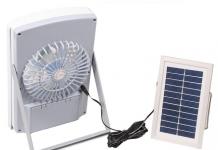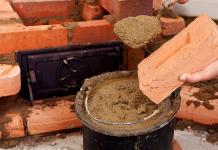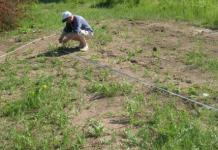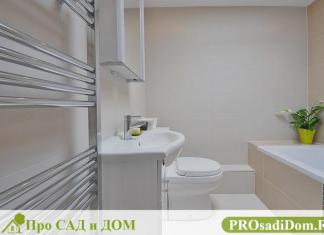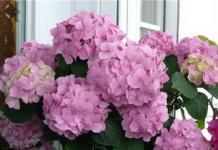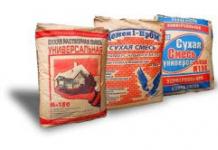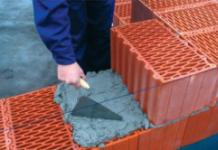In recent years, many have tried to make a business growing oyster mushrooms in Siberia, but there was no stable production, and no. Let's try to figure out what's going on here.
To begin with, it is necessary to clearly distinguish between different levels of mushroom business organization. To grow several kilograms of mushrooms in the garden over the summer is the level of amateur mushroom growing. At the next level - let's call it a family farm - the harvest can reach half a ton of mushrooms per month. It is quite possible to grow such volumes on a personal farmstead by the forces of one family. Sometimes 1 ton of mushrooms per month is called as the desired production volume. However, for a family farm, this is already too much, and in order to attract additional labor, it is not enough. Experience shows that the level of industrial break-even mushroom growing starts from 3 tons of mushrooms per month. Unfortunately, there is often no understanding that the transition from one level to another cannot be smooth, but requires a qualitative reorganization of the entire technological process. Illusions about the ease of growing oyster mushrooms and the ease of its sale quickly dissipate. The enthusiasm of "young" mushroom growers lasts, as a rule, for 3-4 months, for a maximum of six months. Further, euphoria is replaced by fatigue, disappointment, production stoppages, outstanding loans and other negative things. To stop the further discrediting of the very idea of mushroom growing, it is necessary first of all to systematize the causes of failures. I will try to do this, relying on my own quarter-century mushroom growing experience and the information at my disposal about the state of affairs in Russian mushroom growing.
Beginning mushroom growers need to initially foresee the existing problems, among which the following are the most significant.
1. Substrate production. The essence of the problem is the choice of raw materials (straw, husk, flax, sawdust, etc.) and the method of its preparation (hot water or steam, soft pasteurization or hard sterilization).
2.Microclimate. The essence of the problem is the optimization of ventilation, thermoregulation and humidification modes.
3. Quarantine regime. The essence of the problem is the control of pathogenic microorganisms and pests.
4. Pre-sale preparation and marketing of mushrooms. The essence of the problem is the rapid cooling, packaging and storage of mushrooms; development of a mushroom marketing system that takes into account significant seasonal fluctuations in consumer demand for them.
5. Organizational and legal issues. The essence of the problem is to minimize the risks associated with renting premises, obtaining loans, and lack of understanding between project participants.
All these issues are of equal economic importance. It is clear that on a poor substrate you will not get a high yield, but even on a good substrate, the yield will be low with an unsatisfactory microclimate. Insect pests can destroy the crop if sanitary and protective measures are not carried out in time. The pre-sale preparation of mushrooms closes the technological chain. It can be a shame when at this stage the mushrooms - the beauties lose their presentation - dry out, crack, turn into a "bast". And, of course, “When there is no agreement among the comrades, then things do not go smoothly ...”, as well as in the leased areas. Renting is too shaky basis for mushroom growing, because. it is very risky to invest in the reconstruction and technical equipment of the rented premises, and without good technical equipment it is impossible to ensure stable production of mushrooms. Having decided to start growing oyster mushrooms, do not wait for manna from heaven, but tune in to serious work, and then you are simply doomed ... to success.
Many people think about organizing their own business, which would allow them to provide a decent standard of living. Studying various business projects, some of them decide to open mushroom farms. This choice is due to the prospects and high profitability of this direction. To quickly launch a project, aspiring entrepreneurs need a well-written business plan for growing mushrooms.
Entrepreneurs should grow mushrooms for the following reasons:
- they do not need to provide special care;
- you can organize the cultivation of mushrooms at home;
- the crop grows in about 3 weeks;
- business entities can grow, for example, oyster mushrooms, throughout the year;
- in winter, they can significantly increase prices and sell mushrooms at 250 rubles per kilogram.
Before launching such a business project, aspiring entrepreneurs need to study this area, read reference literature, get advice from people who have been growing mushrooms for many years.
It is worth considering such nuances as the destruction of the crop by pests or diseases that can cause losses. After all the pros and cons have been weighed, entrepreneurs can start opening their own mushroom farms.
Stages of organization
To open a "farm" for the production of mushrooms, aspiring entrepreneurs need to draw up a plan for themselves that will include all the important organizational points:
- First of all, you need to start looking for a room in which mushrooms will be grown. Entrepreneurs can consider the following options: the basement of a country house, a greenhouse, a warehouse, a garage, etc. For these purposes, you should use your own or rented premises, the area of \u200b\u200bwhich is at least 60 sq.m. The entrepreneur needs to equip 2 separate boxes that will serve as incubators for mycelium. It is imperative that a chamber designed for germination be equipped, in which a high-quality hood should be installed.
- Purchased mycelium. It is extremely important for an entrepreneur to find good suppliers who can guarantee the quality of the goods. The best solution would be to conclude contracts with companies specializing in the cultivation of mycelium and having their own laboratories. In this case, small discounts will be provided to entrepreneurs, as well as the necessary documents. It is worth considering such a nuance. The shelf life of mycelium does not exceed 4 months, so purchases will have to be made several times a year. It is possible to purchase mycelium from different suppliers in order to compare its quality and in the future to use the material that has proven its high performance.
- Substrate preparation. The entrepreneur will have to independently create a nutrient medium for mushrooms. To do this, you will have to use various components: corn stalks and cobs, barley, rye and wheat straw, flax fires, oat waste, wood shavings, bark and sawdust, as well as other plant waste. When creating a substrate, the following nuances should be taken into account: it must contain air layers, it must have aerobicity. The raw materials used must be subjected to a pasteurization procedure, due to which all microorganisms that can harm the crop will be destroyed.
- Conditions are created for the growth of mushrooms. The room should not be exposed to direct sunlight. It should have an optimum humidity of up to 65%. Containers must be installed at a distance of 10-15 cm from each other. It is important to maintain a constant temperature - 24 degrees. Mushrooms will germinate within 15-17 days, after which they are transferred to a room intended for fruiting.
- The harvest is being harvested. Entrepreneurs must understand that mushrooms are perishable products, therefore, immediately after the cut, they must be transferred to the sale.
Search for clients, advertising
Due to the fact that the shelf life of mushrooms in the refrigerator does not exceed 5 days, a business entity must establish a sales market even before harvesting. He should search for customers not only in the markets, but also among shops and catering establishments:
- large and small retail chains;
- restaurants;
- cafeterias;
- canteens;
- bars;
- pizzerias;
- food industry enterprises that are engaged in the manufacture of various dishes and semi-finished products.
A business entity should think about opening its own line for the processing of mushrooms and the production of semi-finished products. In this case, he will be able to minimize his losses when, for example, the buyer refuses a consignment of goods, or the harvest will have an unsaleable appearance.
Regardless of whether the entrepreneur will organize the cultivation of mushrooms at home, or the process will be put on stream, it is extremely important for him to attract the attention of as many potential customers as possible to his farm. To do this, you need to conduct a large-scale advertising campaign:
Necessary equipment, choice of material
In order for the mushroom farm to begin to fully function, a business entity needs to purchase the appropriate equipment and materials:
- heaters;
- cooling chamber;
- air humidifiers;
- containers;
- racks;
- beams with hooks;
- cutting tables;
- boxes for storage and transportation;
- packages, etc.
Costs and profits
To open a mushroom farm, a business entity needs to incur start-up costs associated with the purchase of materials and equipment:
| Naming of expenditures | Quantity | Price | total amount |
| Heater | 1 PC. | 6 900 rubles | 6 900 rubles |
| Humidifier | 1 PC. | 2 950 rubles | 2 950 rubles |
| steam generator | 1 PC. | 29 800 rubles | 29 800 rubles |
| Hammer crusher | 1 PC. | 24 900 rubles | 24 900 rubles |
| Exhaust fan | 1 PC. | 3 950 rubles | 3 950 rubles |
| Containers for pasteurization | 2 pcs. | 3 900 rubles | 7 800 rubles |
| Polyethylene bags | 500 pcs. | 9, 90 rubles | 4 950 rubles |
| Solution (formalin) | 2 kg. | 49.80 rubles | 99.60 rubles |
| Pitchfork | 3 pcs. | 295 rubles | 885 rubles |
| boxes | 10 pieces. | 95 rubles | 950 rubles |
| other expenses | 8 600 rubles | ||
| Total | RUB 91,784.60 |
Monthly expenses:
To determine the profitability of a mushroom farm (150 bags are provided), the following calculations must be made:
- From one block, a business entity will collect at least 4.5 kg of mushrooms per month.
- He will sell them at a price of 90 rubles per 1 kg.
- You can also sell the used substrate to farmers who will use it as fertilizer at a price of 9.50 rubles per bag.
- Mushrooms were sold in the amount of 60,750 rubles ((4.5 kg x 90 rubles) x 150 bags).
- The spent substrate was sold for 1,425 rubles (150 bags x 9.50 rubles).
- For a month, a business entity can earn 62,175 rubles.
- Net monthly profit will be: 62,175 - 28,340 = 33,835 rubles.
If an entrepreneur strictly follows his business plan, he will be able to recoup his initial investment in just 3 months.
Possible income level
The following factors can affect the income level of a mushroom farm:
- the number of collected mushrooms;
- market prices that are valid at the time of sale;
- the number of regular customers;
- absence or presence of marriage;
- refusal of buyers from a batch of mushrooms, etc.
Registration and registration of business
Immediately after the business plan for growing oyster mushrooms has been drawn up, it is necessary to decide in what legal form the entrepreneur will work. There are two options for it:
- Individual entrepreneur;
- Society with Limited Liability.
If a businessman does not want to constantly fill out a huge amount of documentation and reporting, he should opt for an individual entrepreneur. In this case, you will have to fill out several accounting registers and submit a small package of reports to the regulatory authorities. To obtain the status of a business entity, an individual must submit the following documents to the state registrar:
- application of the established form;
- passport;
- identification tax code;
- a payment order or a receipt confirming the fact of payment of the state fee.
To register a Limited Liability Company, you will have to collect much more documents. In addition to the application and receipt for payment of the state duty, the following documents must be submitted to the Federal Tax Service at the place of residence:
- minutes of the meeting of founders;
- an agreement concluded between the participants on the creation of an LLC;
- passports and TIN of the director and chief accountant, as well as orders for their appointment to these positions;
- Charter.
In order to engage in mushroom business on the territory of the Russian Federation, a business entity will have to obtain an appropriate license. This document will give him the right to trade in food products. It is also necessary to obtain a license from the sanitary and epidemiological service. In a private or public laboratory, you will have to receive quality certificates after each harvest. To do this, from each harvest, the entrepreneur must take a small amount of mushrooms for analysis. They will be tested for the presence of herbicides, heavy metals and other substances harmful to the human body. Such an examination is carried out within 14 working days. The issued certificate will be valid for 3 months.
If a business entity plans to independently sell mushrooms in local markets, then, in addition to the above documents, it is necessary to issue a medical book. You will have to issue a permit for retail trade and in the future pay taxes on the income received.
Disadvantages and advantages of this business
Before opening a mushroom business, an entrepreneur must assess all possible risks:
- Due to the poor quality of the mycelium, there may be a low yield.
- If mushrooms are not sold within 5 days after picking, they will have to be thrown away or quickly processed.
- Equipment may suddenly break down, causing the crop to die.
- Too high competition in the region where the entrepreneur plans to develop his business.
The advantages of the business include a high demand for such products, as well as a fairly simple technology for growing mushrooms.
Useful video
In order not to make the most common mistakes on the way to becoming a mushroom business, a business entity should heed the advice of professionals:
How to start growing mushrooms: business plan, calculations
4 (80%) votes: 1A couple of years ago, when the first Windows phones just came out, I decided to play one small game and opened my own small business - I wrote several programs for Windows phones and started selling them. Since then, a lot of time has passed and from a harmless hobby, my business has gradually turned into an even more harmless hobby (the market for Windows smartphones has still not reached, it seems, even 4 percent). I actively abandoned writing new versions of programs, but by some miracle the total number of those who downloaded my applications approached half a million, and every month 200-300-400 dollars of profit began to come to the account. A trifle, but nice. Well, that is, it was nice until the month of April came and I didn’t have to think about taxes. Fuck him, the minimum turbotax that can handle my situation (home and business) costs a whopping $109, which no one will refund me. But also the three nights of my life that I have already spent filling out and calculating all taxes, and this will never return. As a result, I became angry and irritable.
The only thing that saves the world from me killing everyone around is rain. I do not want to leave the house. And home is fine. How glad I am that I don't live and work in some big stone tower in some big city. I love my little Duval full of farmland and programmers. You look out the window - and there is a plum blossom. At neighbors - deer peel bushes. Silence on the streets, even cars are not frequent guests. It’s rare when you hear some kind of stomping outside the window - and there, bah, the locals are going somewhere. Happens.



My most popular application is called GPS Calculator and many of its users are real American farmers who use my program to calculate the area of their fields. I have great respect for the farmers for their work and I believe that working on the land is one of the most important things that you can do at all.
The time of gigantic, poisonous farms destroying the whole nature around them has long passed. According to Washington state statistics, the number of American farmers is slowly growing, successful farmers are getting younger, each farm is getting smaller and smaller (the average size in King Prefecture is 10 acres), they specialize in rare crops, a greater variety of varieties, organic farming, working in maximum harmony with nature, reducing irrigation and fertilization, on products ideal for the local climate. More and more people are realizing that much more pleasant than Mexican or Californian tasteless cucumbers - local, native, vegetables, root vegetables, berries and salads.
Or maybe mushrooms. Usually I buy mushrooms like this - I write a message to the farmer (who lives with me in the same city) on Facebook and ask him to bring it. Today I wanted to do the same, but the farmer said that today he is very, very busy on the farm and it is generally raining heavily. Therefore, I had to, on the contrary, go to him. Do you want to learn and see how ordinary American mushroom farmers live and work in ordinary small towns? Then look.
The farm is located in Duval on 315th Avenue. It's not far from my house, but already on the outskirts of the city, so 315th Avenue is heavily wooded and not paved. Here is such.

We turn left on 315th Avenue into the first house. Right here. We see a car, sakura and a farmer's house. There is silence and no one around, but this is not scary - the farmer is now busy with work and in order to catch him you need to go directly to the backyard. Near the house there is a garage and daffodils bloom in a puddle.


And here is the backyard and farm. Tractor, sawdust, shed.

This green machine is for cutting branches and all kinds of wood debris into sawdust. The farmer buys all the extra bits of aspen, spruce and thuja from local lumberjacks, the tractor puts them in the car, the car processes all this garbage into sawdust and packs the sawdust in liter plastic bags (made of compostable corn plastic).

This scary device (similar to something from Lost) is used to turn water into hot steam (under high pressure).

And here is the owner himself. He opened a mushroom farm in the city of Duval two years ago, and before that he lived in Izu Prefecture in Japan for three years, taught English at school there and was imbued with a love for mushrooms. Works with sawdust in the fresh air, only occasionally being distracted by Facebook. Social media (and blogs) is an extremely important tool for every farmer I know. Now everyone is blogging. But I, for one, don't know why it would occur to someone to subscribe to some Coca-Cola twitter. Small farmers are quite another matter. From the Facebook of the baker Sean, his readers will find out what his mood is today and what kind of bread (or not at all) will turn out on this occasion. The mushroom farm posts pictures of mushrooms and frogs. In response, the farmers who subscribed to their readers learn about the interests and tastes of the buyers of their products, and adjust the assortment to this. It turns out a completely different, personal, level of service.

The holiest place of the farm - mushrooms are just starting to grow here. It is done this way, all the shelves in the house are loaded with bags of fresh sawdust. The house is closed and a jet of hot steam is let in, which sterilizes all sawdust from excess mold and bacteria. Then fungal spores are carefully planted in each bag. Mushrooms are regularly watered with the purest spring water (the spring is located right on the farm), sawdust begins to rot and mold (and due to the fact that rotting occurs inside closed bags, these bags get very hot).

When the first mushrooms begin to crawl out of the mold, they are transferred to another, neighboring, house, which is called the “growth house”. Here is the owner of the farm and his partner in this house of growth, at work (with constant work with mushrooms, precautions for the lungs are needed).

Shiitake.

Hedgehogs love to grow upside down.

Growing mushrooms as a business is suitable for an entrepreneur with a small start-up capital. Mushroom growing has every prospect of growing into a profitable business, provided that not only money is invested in it, but also professional knowledge.
[ Hide ]
The relevance of the mushroom growing business
The mushroom growing niche is being actively explored by entrepreneurs. This is due to the fact that the business does not require large start-up costs, and the products are in high demand all year round. Despite the obvious relevance of this type of activity, at present the market can be called low-competitive.
Compared to the cultivation of other plant crops, mushroom growing does not require the construction of special expensive greenhouses. In addition, the cultivation technology itself is quite simple and can be mastered even by an inexperienced entrepreneur. All this allows you to quickly earn and recoup investments.
Growing mushrooms becomes profitable for the following reasons:
- there is no need to provide expensive care;
- it is possible to organize a small farm at home;
- fast ripening rate of the crop: from 3 weeks;
- there is a winter season of "high prices".
Before organizing a mushroom growing business, you should decide on their assortment and types, each of which requires special care.
What mushrooms to choose for cultivation?
Oyster mushrooms Champignons White mushrooms Truffles
In the Russian market, the following types of mushrooms are most often chosen for cultivation:
- oyster mushrooms;
- Champignon;
- Forest mushrooms;
- truffles.
Oyster mushrooms are a very popular and most unpretentious species. It attracts a novice entrepreneur with its high yield: up to 14 kg of mushrooms can be harvested from one square meter. In this case, the first collection is possible in a month. Oyster mushrooms are a valuable species containing many nutrients and vitamins. However, in the process of growing, some of its shortcomings appear.
Disadvantages of oyster mushroom:
- fragility: this mushroom is difficult to transport over long distances;
- exactingness to a special temperature regime and the fastest possible delivery;
- unexpressed mushroom aroma;
- possible allergy to spores.
Many mushroom growers agree that champignons are more difficult to grow than oyster mushrooms. They require special quality mycelium and growth media. In addition, mushrooms need special humidity and temperature conditions. Mushrooms grow in racks and boxes. Within a month they reach the required growth and after three months they are already harvesting their crops.
The most common wild mushroom for cultivation is porcini. This is the most valuable mushroom in terms of taste, which can be grown only when conditions of the natural environment are created. The germination of this species is possible only in symbiosis with the roots of trees, so the cultivation of the white fungus occurs in groves and coniferous forests.
Growing truffles is an extremely profitable and, at the same time, an extremely risky business. They grow under oak trees. Seedlings are placed under sterile conditions and then transported to the farm. The fungus requires special, enriched with various elements, compost.
According to entrepreneurs, you should start with the most unpretentious, but no less tasty and nutritious mushrooms - oyster mushrooms. In the future, it is also possible to organize the production of truffles and some types of forest mushrooms.
Necessary conditions for growing oyster mushrooms and.
Description and analysis of the market
Until 2014, the mushroom market in Russia consisted almost entirely of imported products. After the introduction of import restrictions, foreign products reduced their volumes, which allowed domestic producers to increase the cost of mushrooms grown on their own, without reducing demand. The magazine "School of mushroom growing" for 2015 published data on an increase in the production of oyster mushrooms by 17% compared to the data for 2014 of the same period.
Today, the market volume in Russia is about 60 thousand tons. About 160 thousand tons of mushrooms are required to cover import substitution. Such data, together with the low level of competition in the market, is a good indicator for organizing your own farm.
Market analysis shows that the demand for products depends on the location. The most successful for making money are small cities and even arid villages - those places where there are also few forest mushrooms grown in natural conditions.
The most common mushrooms grown in Russia are champignons and oyster mushrooms. The most popular format for doing this business is small farms with a yield of 3-5 tons per year.
The largest Russian producer of oyster mushrooms "Kaskad" is located in the Rostov region. The leaders in terms of production are the Central, Volga and Southern Federal Districts.
According to the marketing research “Analysis of the world and Russian markets for mushrooms and mushroom products. Forecast until 2014”, by EVENTUS Consulting, the volume of domestic production should increase by 2.5-3 times.
Reasons:
- relatively low consumption of mushrooms per person and the growth potential of this indicator;
- the ability of manufacturers to compete on price and types of products;
- the growth of economic indicators and the desire for a healthy lifestyle of the population.
The target audience
The target audience of this type of activity is both individuals over 30 years old, striving for a healthy and varied diet, as well as large enterprises and suppliers.
Among them:
- grocery stores and supermarkets;
- catering establishments;
- animal enterprises;
- mushroom wholesalers.
Competitive advantages
The competitive environment in this area can currently be defined as low. However, the market is evolving and you should define your own advantages.
They can become:
- constant support of high quality and freshness of products;
- uninterrupted delivery of mushrooms;
- monitoring and introduction of new technologies into production;
- use only proven suppliers of mycelium;
- the ability to work with both legal entities and individuals;
- discounts for bulk purchase;
- flexible pricing policy.
To minimize losses and provide an additional assortment to the buyer, an entrepreneur can open his own line for processing mushrooms or manufacturing semi-finished products.
Advertising campaign
To promote a product on the market, it is necessary to make it a recognizable brand with its own history. The basis for the formation of the company's image is the presence of an informative website with product characteristics and elements of corporate identity.
- Name;
- logo;
- corporate video with footage of production and products.
To work with legal entities and representatives of large retail chains, it is important:
- produce good quality information materials;
- develop a strategy for presence in the online environment;
- develop methods of additional competitive advantages.
For promotion among individuals, you can use:
- placement of outdoor advertising at points of sale;
- holding promotions and tastings;
- development of social networks and attraction with non-standard content.
Step-by-step instructions for opening a mushroom farm
To implement the idea of \u200b\u200bgrowing mushrooms at home, you must:
- Analyze the market.
- Write a detailed business plan.
- Pass state registration and choose the form of taxation.
- Select mycelium and find substrate suppliers.
- Develop a technology for making compost.
- Find and prepare a room.
- Start growing products and adjust technology.
- Search for marketing channels.
- Produce sales of products and establish contacts with wholesale customers.
Documentation
Business registration involves the possibility of registration in several forms:
- Individual entrepreneurship (IP);
- Limited Liability Company (LLC);
- Peasant farming (KFH).
The IP form allows you to both grow and sell mushrooms.
- certified application by a notary in the form No. P21001;
- an application for the transition to the ESHN or USN (otherwise it will be OSNO by default);
- copy of all pages of the passport.
The LLC form makes it possible to attract additional financial assets through government programs and loans.
Requires the following documents for registration:
- application in the form No. Р11001;
- charter of LLC;
- a decision to open an LLC or a protocol, if there are several founders (partners);
- receipt of payment of state duty;
- copies of the founders' passports certified by a notary;
- application for the transition to the unified agricultural tax or simplified tax system (the default will be general).
KFH is a simplified form of LLP (limited liability partnership), as well as IP and LLC are endowed with legal force.
OKVED codes, under which the mushroom growing business falls:
- 01.13 "Growing vegetables, melons, root and tuber crops, mushrooms and truffles";
- 01.13.6 "Cultivation of mushrooms and truffles".
After growing a batch of mushrooms, it is necessary to obtain documents for the products.
Namely:
- quality certificate;
- declaration of conformity with the state standard;
- phytosanitary certificate;
- conclusion about the radiological examination.
Mushroom farm space
The organization of mushroom growing is beneficial, among other things, due to the absence of high costs for finding and preparing premises.
At home, a suitable room can be:
- basement;
- barn;
- cottage or village house;
- abandoned agricultural or industrial buildings.
Basic requirements for the premises:
- air temperature from 12-25°C;
- air humidity not less than 85%;
- availability of communications: electricity and water supply;
- connected heating and ventilation.
For small rooms, additional air humidification is not required. However, for large-scale production, a special humidification and conditioning system is required. Inside large rooms, cultivation chambers are also used, which allow maintaining an optimal microclimate.
Production zones:
- a warm zone for sprouting mycelium with an irrigation system and good ventilation;
- cool area for planting mushrooms.
If you plan to produce compost yourself, then you need to organize an additional area with a grinder and equipment for pasteurization.
Equipment and inventory
For growing mushrooms at home, equipment and supplies are required:
Name | Quantity, pcs. | price, rub. | Amount, rub. |
Hammer crusher | |||
Humidifier | |||
Heater | |||
steam generator | |||
Exhaust fan | |||
pasteurization container | |||
Polyethylene bags | |||
garden pitchfork | |||
Formalin solution, kg | |||
Household boxes | |||
cooling chamber | |||
Hammer crusher 35 000 rub. Humidifier 20 000 rub. Steam generator 38 000 rub. Polyethylene bag 250 rub.
For large-scale production, additional equipment will be required:
- climatic installations depending on the cultivated species;
- autoclave for the manufacture of mycelium;
- special equipment for pasture of mushroom fruiting bodies;
- substrate preparation machines;
- racks for camera equipment;
- Packaging equipment.
Mycelium
The choice of mycelium should be approached especially carefully, since the yield and income of the entrepreneur depends on its quality.
Mycelium is the seed material, which is the vegetative body of fungi, consisting of thin, branched filaments called hyphae.
It is worth buying mycelium only in specialized laboratory companies. At the initial stage, it is recommended to purchase from several suppliers with a good reputation and draw a conclusion based on your own experience.
The supplier is selected according to the following criteria:
- availability of licenses and quality certificates;
- the presence of positive feedback from customers;
- product quality;
- average market value.
The shelf life of mycelium is up to 120 days at a temperature of +2 degrees, so its purchase is carried out several times a year.
When buying, you should pay attention to the following product characteristics:
- strain and variety of fungus;
- speed and percentage of grain fouling;
- storage period;
- mold resistance;
- internal temperature + 20-22 degrees;
- absence of black or green spots with an ammonia smell.
Mycelium is used to prepare the substrate. Over time, you can make it yourself. This process is quite complicated and requires additional premises and professional skills. However, substrate components are inexpensive, so if done well, making seed can save a lot of money.
The main stages of preparing the substrate at home:
- Straw or sawdust are steamed in hot water at the rate of 1 kg of mycelium per 10 kg of substrate.
- The resulting mixture is cooled, combined with mycelium and placed in plastic bags. The mycelium is crushed without opening the bags and its temperature is equalized with the substrate. The laying of the mycelium and the opening of the package is carried out under sterile conditions with the treatment with a disinfectant solution.
- In the resulting bags with a clean object, holes of 0.5 cm are made at an angle of 45 degrees at a distance of 10-15 cm. Mushroom blocks are installed so that the sides with slots are ventilated and are not on the side of the wall.
- Bags of 10-12 kg are sent to the shelves in a room without light penetration at a temperature of +18-20ºС. During the incubation period, the room is not ventilated. It is mandatory to carry out daily cleaning with chloride solutions.
Staff
Often mushroom production starts as a family business. This reduces the cost of wages and allows you not to worry about the responsibility of employees.
However, with the expansion of production, additional staff of qualified specialists will be needed. On average, it takes 1 worker to harvest up to 100 kg per day.
Thus, the composition of the staff of the mushroom farm:
Job title | Number of people | Salary, rub. | Monthly payment fund, rub. |
production worker | |||
support worker | |||
Production responsibilities include:
- harvesting;
- monitoring of growing processes and timely adjustment;
- reporting;
- creation of conditions for the productive functioning of production;
- formation of applications for the purchase of mycelium and cultivation of compost.
The auxiliary worker is the main production assistant and performs the operational instructions of the manager.
Financial plan
Mushroom growing is a business with an average start-up cost. The amount of investment, recurring costs and income depends on the planning of scale. Drawing up a financial plan with exact numbers will help calculate the main indicators and make the project profitable. You can download a ready-made business plan on many sites, but all indicators should be adjusted to the characteristics of a particular region.
How much does it cost to open a mushroom farm?
Startup costs will be:
Item of expenses | price, rub. |
Premises for rent | |
Repair and communication | |
Purchase of mycelium and substrate | |
Purchase of equipment | |
Registering an enterprise and obtaining the necessary licenses | |
Searching for sales channels and establishing contacts | |
Other types of expenses, including contingencies | |
Salary to staff for the first month | |
Recurring costs
Monthly cost items will be:
Income
To calculate the profitability per month, you should determine the income from one cycle. There can be 4-6 such cycles per year.
10 tons of substrate give about 2 tons of mushrooms. The average selling price is 150 rubles. per kilogram. Thus, the net profit per month will be 150 thousand rubles.
Business income per month 42 thousand rubles.
Calendar plan
The plan for launching the enterprise is designed for 4 months. A feature of the calendar plan will be the receipt of additional certificates for products, which are possible only after the cultivation of the first batch. Similarly with the establishment of distribution channels.
| Stage | 1 month | 2 months | 3 months | 4 months | 5 months |
| Market analysis | + | + | |||
| Business plan preparation | + | ||||
| Registration of a package of documents | + | ||||
| Obtaining Additional Permissions | + | + | |||
| Premises for rent | + | ||||
| Repair work | + | + | |||
| Purchasing and stocking | + | + | |||
| Recruitment | + | ||||
| Establishment of sales channels | + | ||||
| Opening | + |
Risks and payback
The payback period of the project with a stable yield and organized marketing is 16 months.
After the project reaches the break-even point, the following prospects can be distinguished:
- increase in the selling price of products;
- increase in production volumes;
- expansion of views;
- availability of additional distribution channels and wholesale customers.
Like any business related to the cultivation of products, mushroom growing is associated with certain risks.
Risks and ways to minimize them:
- Unsold goods and damage to the presentation. You should think over the distribution channels in advance and purchase a refrigerator for short-term storage of products.
- Insufficient yield. You should study the market for bioadditives and, if necessary, change the supplier of mycelium.
- Unforeseen costs associated with lack of experience. It will help the study of special literature and acquaintances in order to exchange experience.
- The growth of competition. It is necessary to monitor the observance of the balance "price - quality" and work on expanding the service.
A business with low competition is attractive to an entrepreneur as highly profitable. But it is often associated with the lack of development of a niche and the lack of professional knowledge of the organizer himself. A systematic study of the specifics of the activity and the prompt change of negative factors will lead to the expansion of the business and its successful functioning.



